Shamian Island, situated on the Pearl River in Guangzhou’s Liwan District, covers an area of approximately 0.3 square kilometers. Its Chinese name literally means “sandy surface.” As a former concession area administered by Britain and France in modern history, the island preserves over 150 historical European-style buildings and is often referred to as an “open-air architecture museum.” Today, Shamian Island boasts the most exotic collection of European architectural complexes in Guangzhou. With its unique environment, tranquil streets, and distinctive architecture, it has become a notable destination well worth visiting in the city.
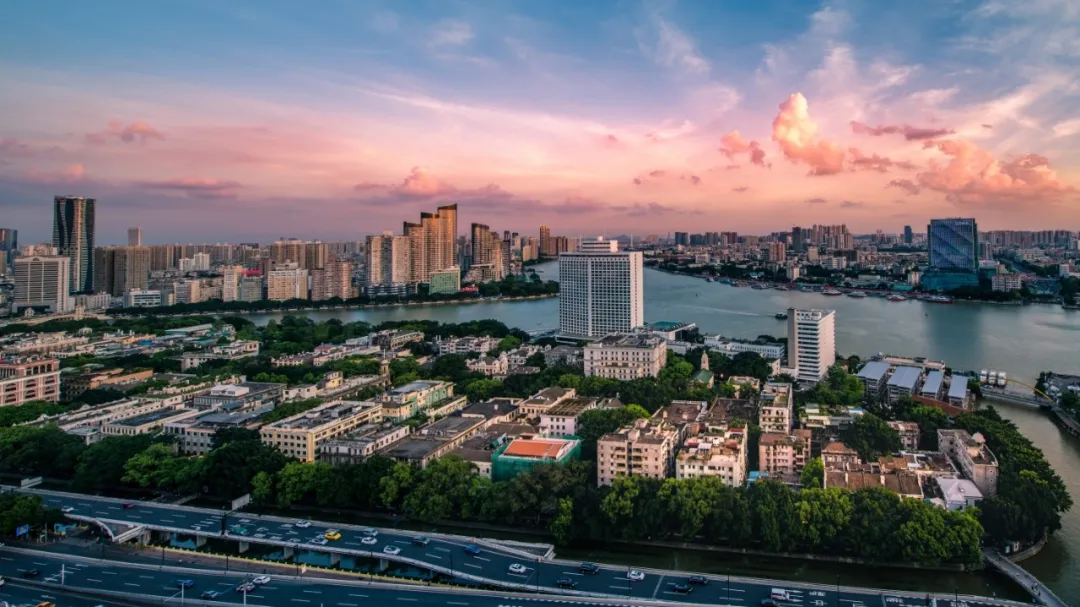
Shamian Island Facts
- Type: Historical & Cultural Scenic Area
- Name: Shamian Island
- Also Known As: Shicuizhou
- Location: Liwan District, Guangzhou, on the north bank of the Pearl River
- Dimensions: 862 meters (east-west) by 287 meters (north-south)
- Area: 0.3 square kilometers
- Recommended Visiting Hours: 2~3 hours
- Opening Hours: All day
- Tickets: Free
History of Shamian Island
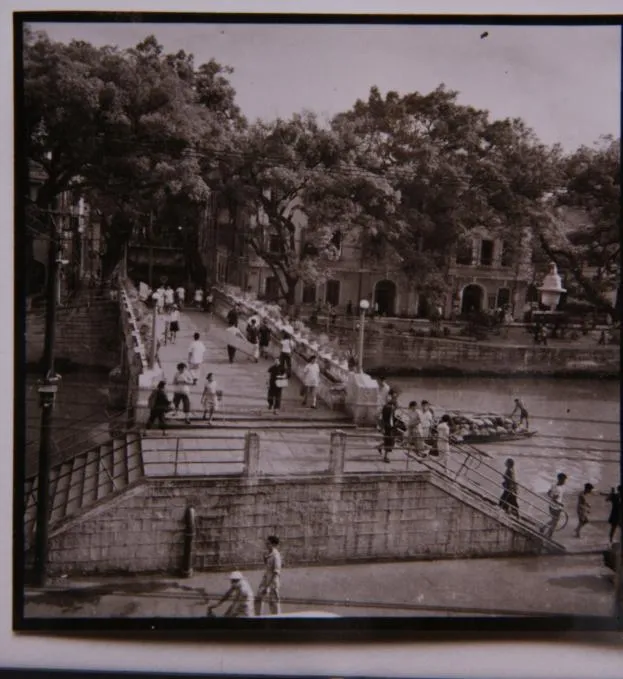
Shamian Island began as a sandy shoal in the Pearl River, historically called Shicui Zhou. From the Song Dynasty onward, it served as a key hub for Guangzhou’s foreign trade. During the Qing Dynasty, its strategic importance grew with the construction of a coastal fort.
After the First Opium War, Britain and France secured control of the area in 1859. They funded the digging of a channel to separate it from the mainland, creating the distinct island seen today. It was divided into British and French concessions, where consulates, banks, and foreign firms soon established a presence.
In the 20th century, Shamian witnessed significant events including the 1925 Shamian Massacre and Japanese occupation during World War II. After 1949, the island was fully returned to Chinese control. It was designated as a National Key Cultural Relics Protection Unit in 1996, recognized as a “Chinese Historical and Cultural Street” in 2013, and became one of Guangzhou’s first international community pilot zones in 2023.
What to Do on Shamian Island
Stroll Through an Open-Air Architectural Museum
The best way to experience Shamian Island is on foot. The island is neatly laid out with eight main streets, including North Shamian Avenue, Central Shamian Avenue, and South Shamian Avenue, which create a pleasant and easy-to-navigate grid.
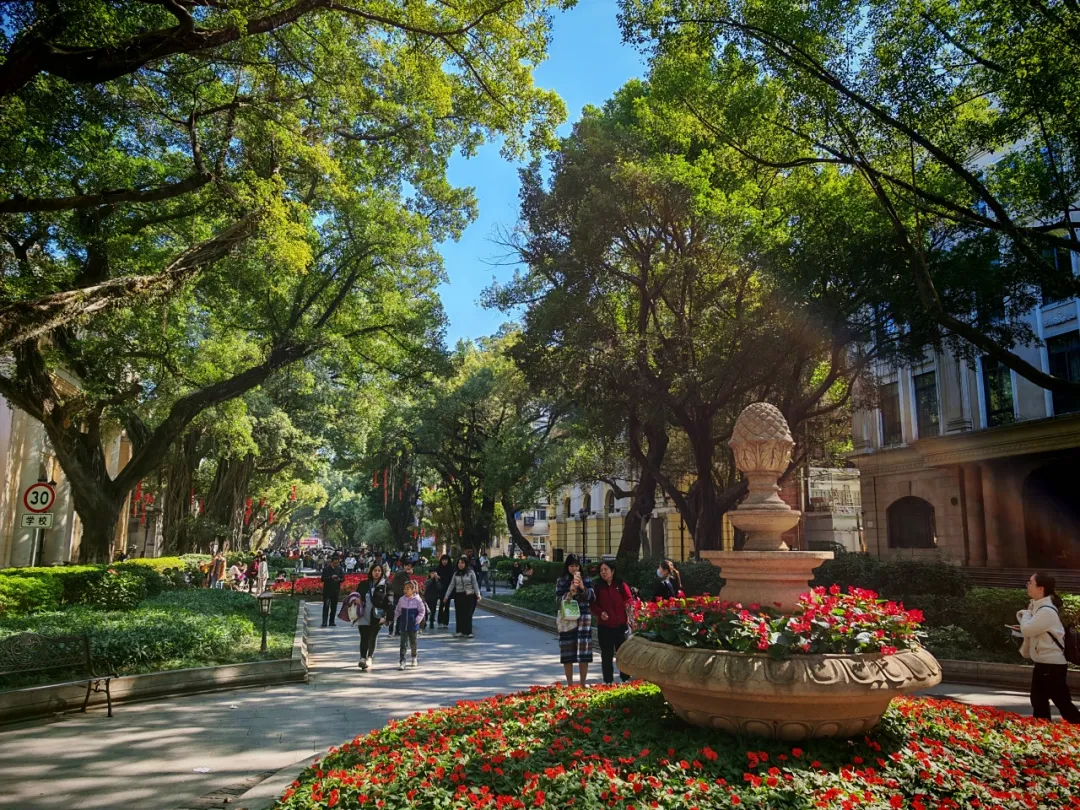
Its quiet, tree-lined streets are home to a striking collection of European-style buildings from the late 19th and early 20th centuries. Often compared to the Bund in Shanghai, the island forms a living museum of architecture. As you walk past former consulates, banks, and trading houses, you can admire a rich variety of styles, from Gothic and Baroque to Neoclassical and Eclectic. Be sure to read the plaques on the walls to learn about each building’s original purpose and history.
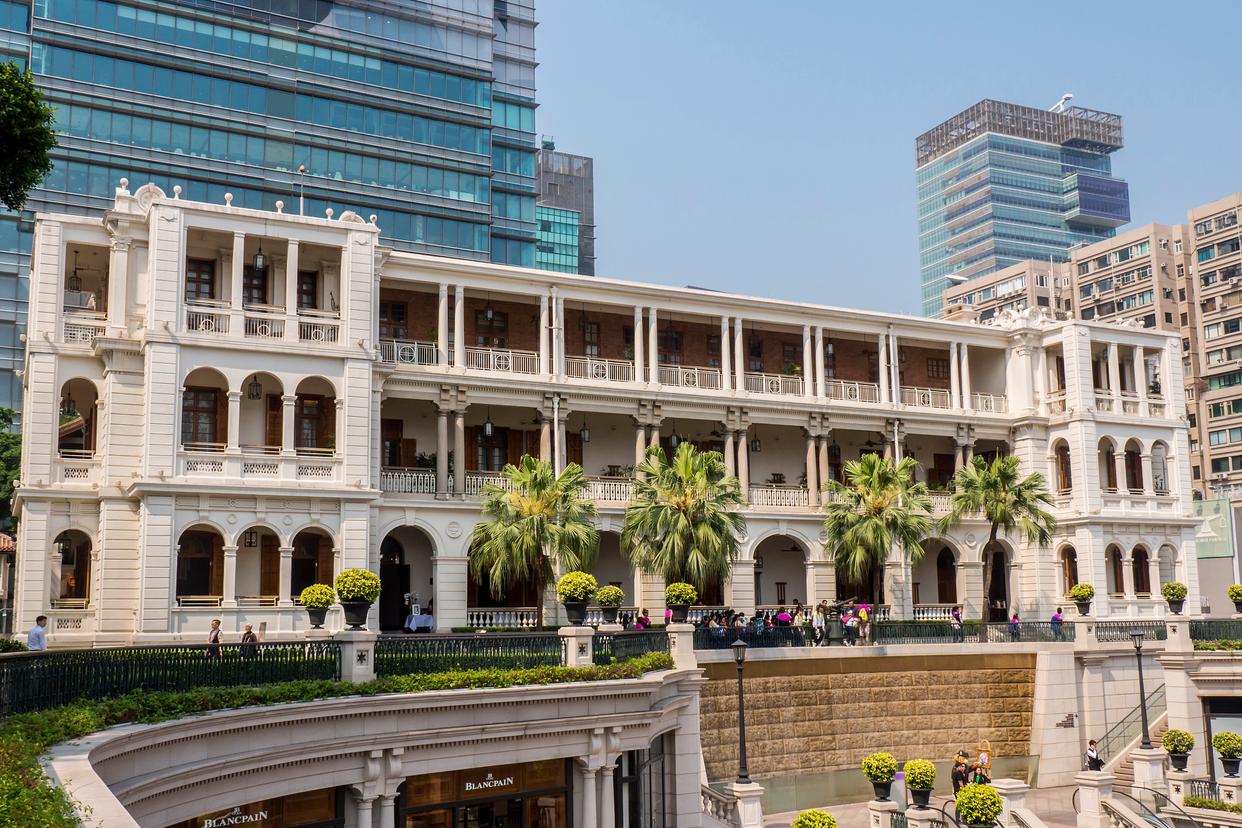
Architectural Highlights of Shamian Island
| Building Name | Former Function | Architectural Style | Key Features |
|---|---|---|---|
| Our Lady of Lourdes Chapel | Catholic Church | Gothic Revival | Distinctive pointed arches and stained glass; one of the island’s most prominent landmarks. |
| The Red House | Customs Officers’ Club | Eclectic (Victorian influence) | Striking red-brick exterior; originally a social and recreational club for foreign customs officers. |
| Former HSBC Building | Bank (Hongkong and Shanghai Banking Corp.) | Neo-Classical | Grand, imposing facade symbolizing the financial power of the foreign concessions. |
| Christ Church | Anglican Church | Victorian Gothic | Simple and elegant brick structure; built to serve the British community on the island. |
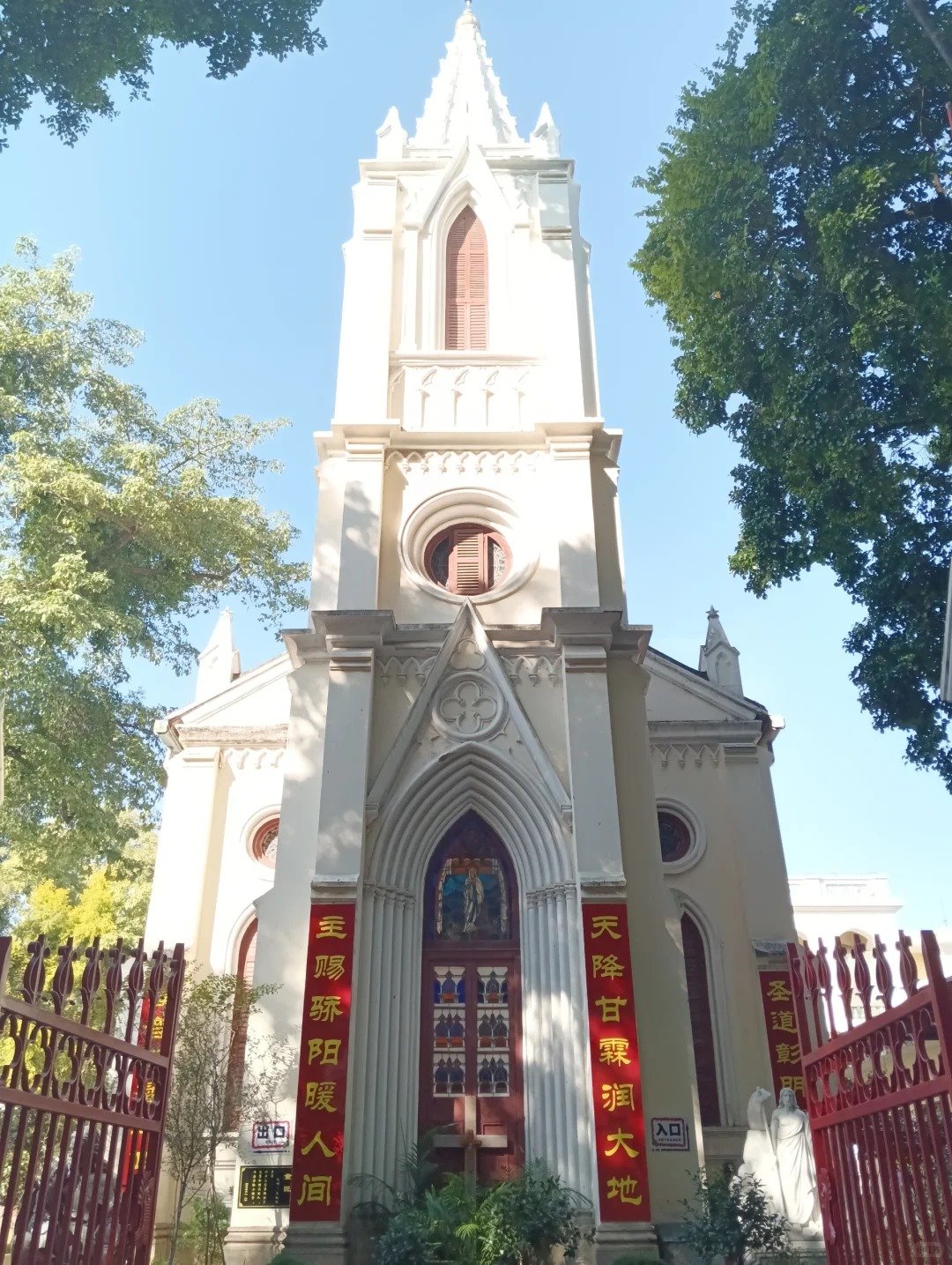
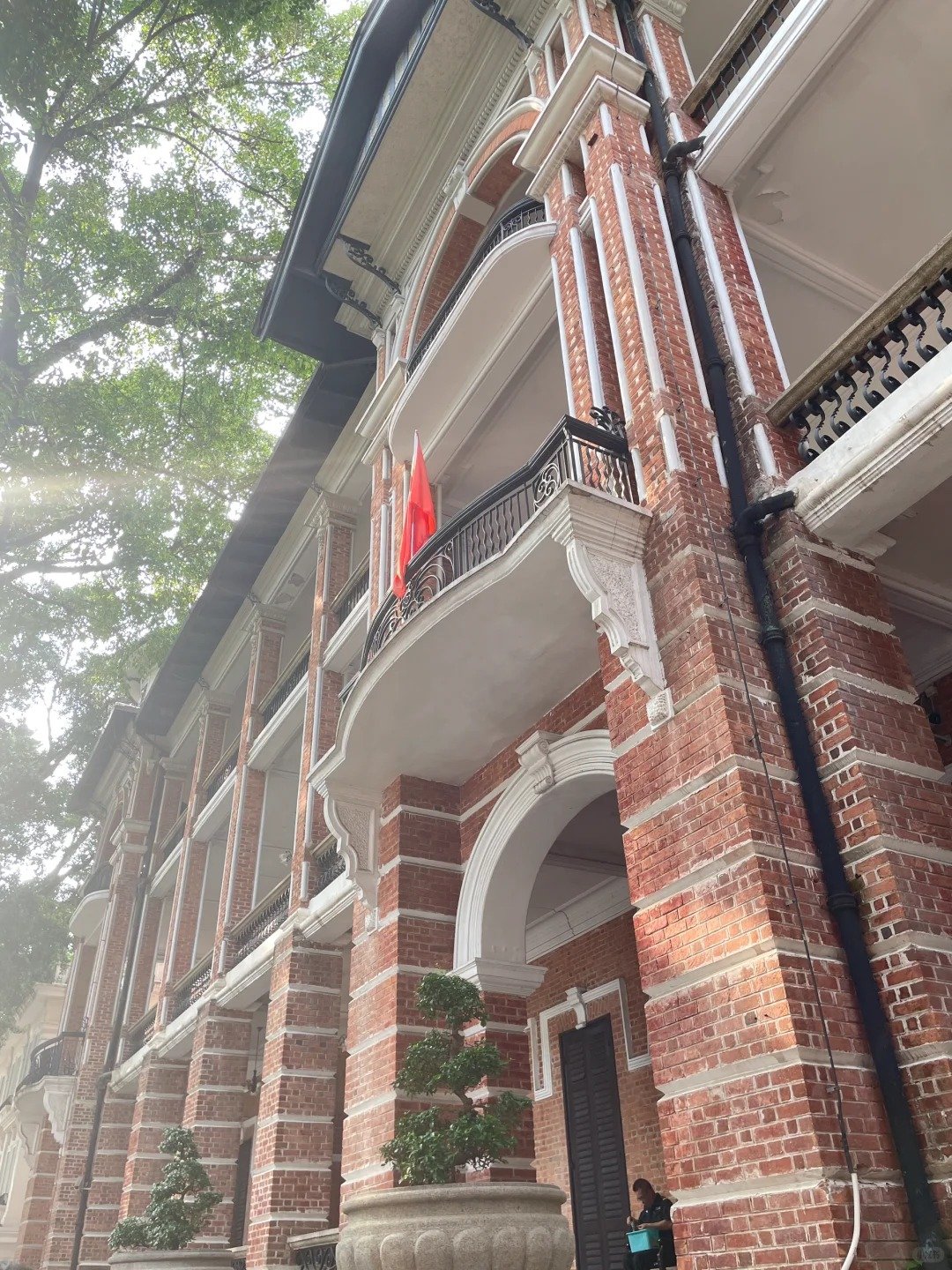
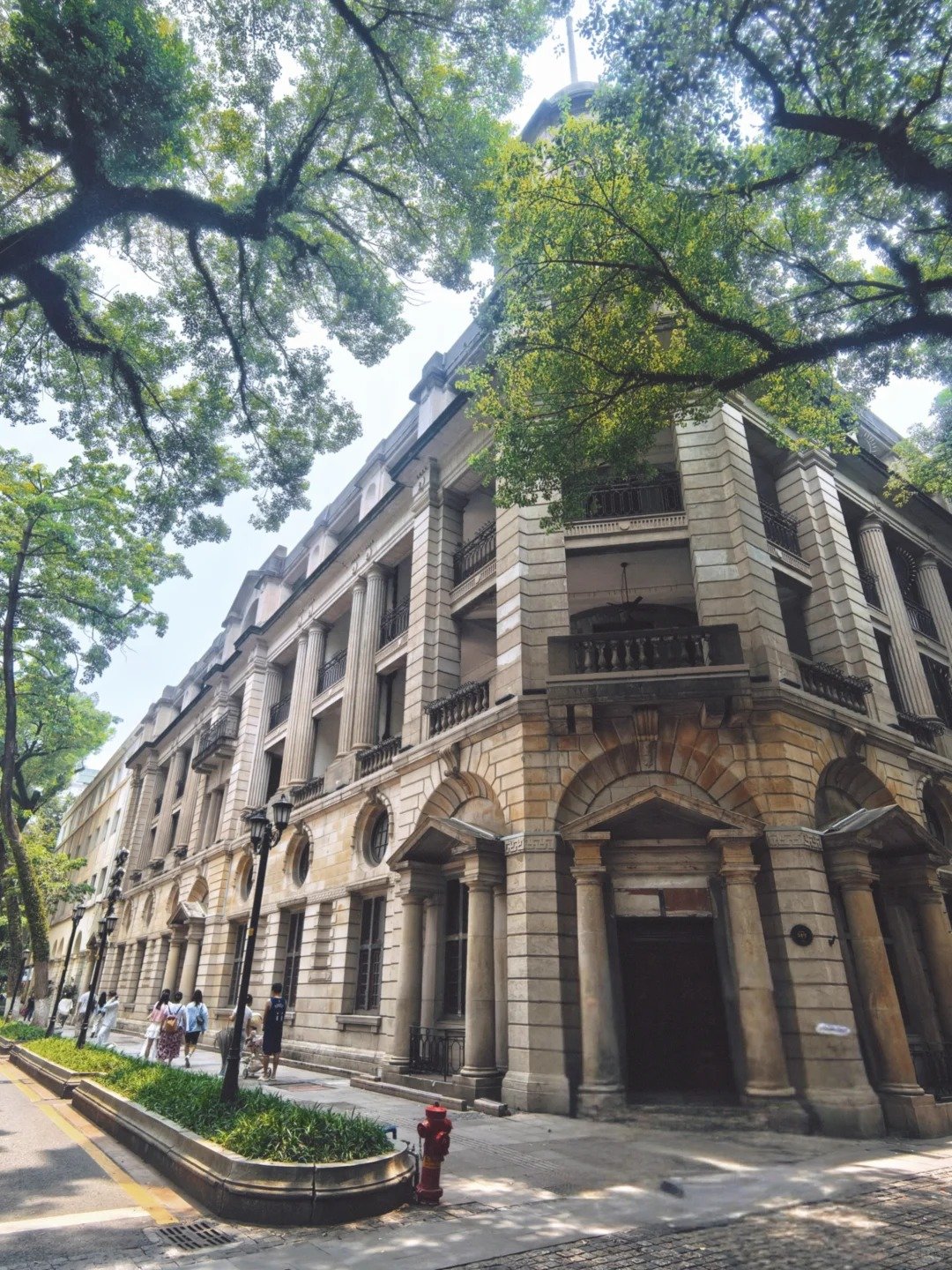

The architectural complex of Shamian Island is also distinguished by its harmonious coexistence with the natural environment. The island is also celebrated for its remarkable collection of 137 ancient trees, the densest concentration in downtown Guangzhou. Century-old banyans and camphor trees blend harmoniously with the historic architecture, creating a lush “green island” effect and earning the area the nickname “the city’s green lung.”
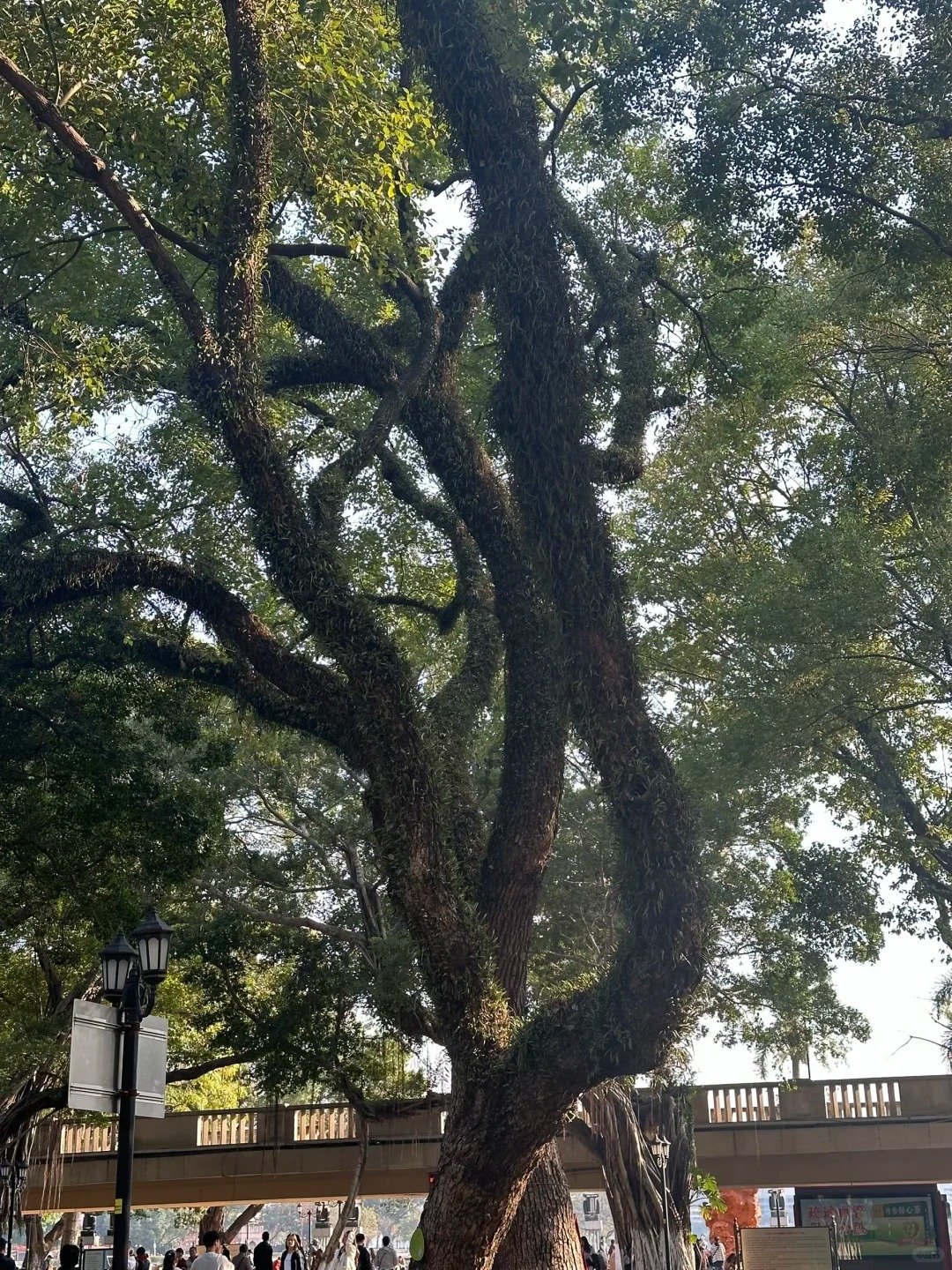
Experience the Island’s Slow-Paced Life
Thanks to its limited vehicle traffic, Shamian offers a uniquely tranquil atmosphere. Find a bench under one of the magnificent old banyan trees to simply relax and observe daily life. For a different perspective, enjoy a leisurely walk along the riverside promenade, where the southwest side of the island features several cafes and bars with views of the Pearl River—a perfect spot for a break.
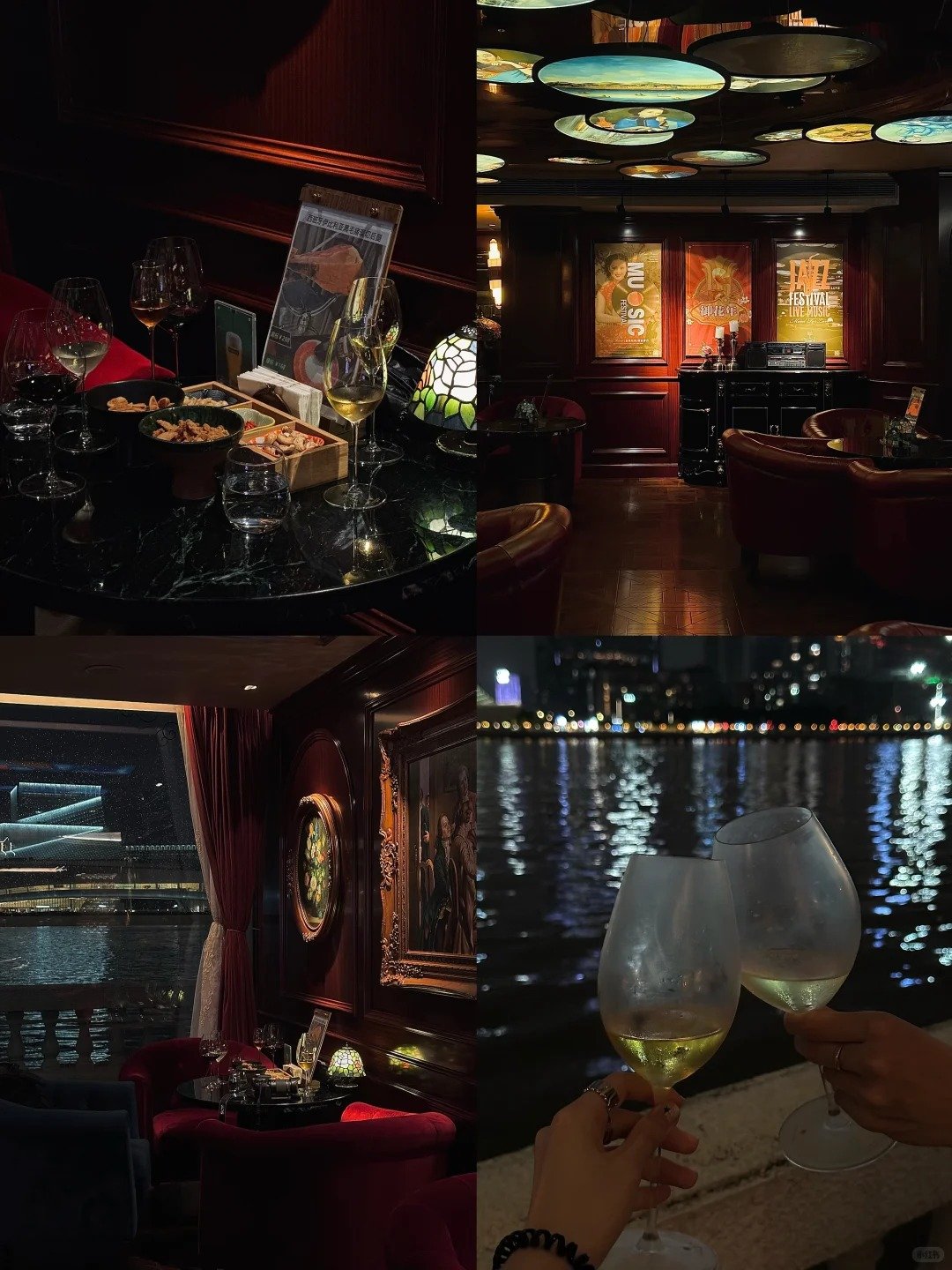
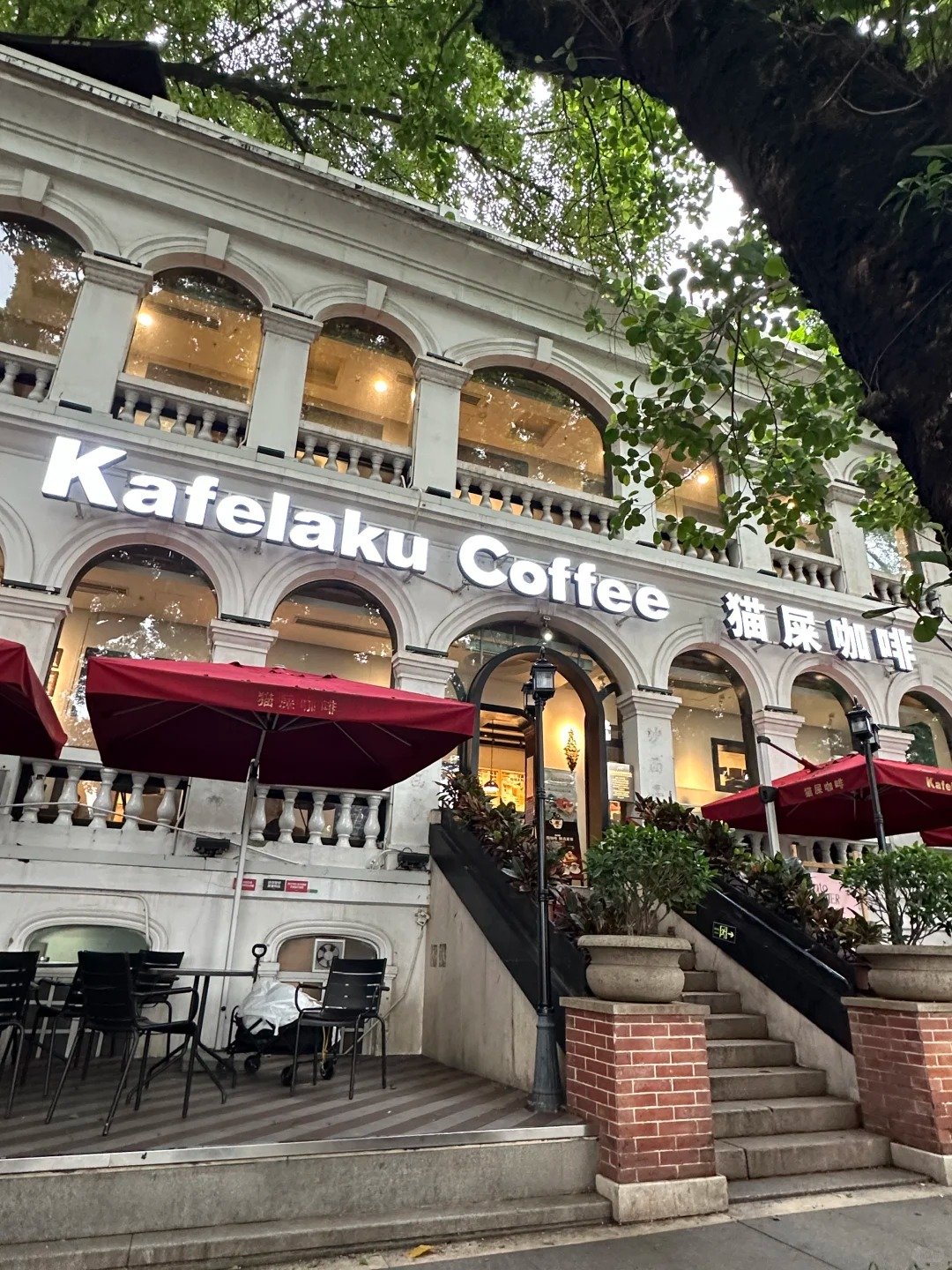
To see the island’s community heart, visit Shamian Park. Here, you’ll find the true local rhythm of life: elderly residents playing chess and chatting, while children chase each other and play. Together, these elements create a peaceful environment that feels a world away from the city’s bustle.
Recommended 1 Day City Tour with Shamian Island
This route connects some of Guangzhou’s most iconic landmarks, offering a perfect blend of traditional Lingnan culture, modern urban renewal, and historic European architecture. The journey can easily be completed in one day, with comfortable walks or short rides between most stops.
Ancestral Temple of the Chen Family, a masterpiece of Lingnan architecture built over 125 years ago. Admire its exquisite decorations, including detailed wood carvings and iron castings, which have earned it the title “Pearl of Lingnan Architecture.”
Yongqing Fang, a revitalized historic neighborhood, showcases Guangzhou’s successful blend of tradition and modernity. Here you can explore cultural landmarks like the Bruce Lee Memorial and Cantonese Opera Art Museum, discover unique artisan shops offering intangible cultural heritage experiences, and enjoy a variety of local snacks at food boutiques.
Yanjiang West Road, often called Guangzhou’s “Bund.” This scenic riverside promenade offers beautiful views and passes by a series of historic buildings like the former Customs House, creating a charming transition from the island’s quiet to the city’s energy.
Sacred Heart Cathedral, a magnificent Gothic Revival structure built entirely of granite. Known locally as the “Stone House,” its soaring spires and stunning stained-glass windows make it one of Guangzhou’s most breathtaking landmarks.
You could travel in this way:
Chen Clan Ancestral Hall → Yongqing Fang → Shamian Island → Yanjiang West Road → Sacred Heart Cathedral
Where to Stay in Liwan District
For travelers seeking upscale accommodation, top-rated options on Trip.com include the White Swan Hotel, MEILIE Homestay, and voco Guangzhou Shifu, with nightly rates starting above $100. The White Swan Hotel, located right on Shamian Island, is particularly recommended for its historical significance and river views.
If you’re traveling on a budget, consider LIV Hotel (Guangzhou Baiyun Railway Station), LingDu, or Guangzhou Tianhe Sports Center Mercure Hotel, all offering comfortable stays at under $50 per night. While not in Liwan proper, these hotels provide good value and are conveniently connected to the metro system for easy access to the district’s attractions.
Travel Tip: For the best experience, we recommend choosing accommodation located near a metro station. Guangzhou’s efficient subway system makes it easy to reach Liwan District’s scattered attractions, saving you time and transportation costs.
How to Get to Shamian Island
By Metro
- Take metro Line 1 or Line 6 to Huangsha Station. Get out from Exit F and walk through an overpass to the bridge to reach the Island.
- Take metro Line 6 or Line 8 to Wenhua Park Station. Get out from Exit E and walk about 4 minutes to reach the Island.
By Bus
- Take bus 1, 57, 64, 75, 106, 181, 217, 552 or Guang 281 to Shizhong Yiyuan Station.
- Take Sightseeing Bus Xiguan Style to Shamian.
Shamian Island Tickets & Opening Hours
| Entrance Fee | Free |
| Opening Hours | All Day |